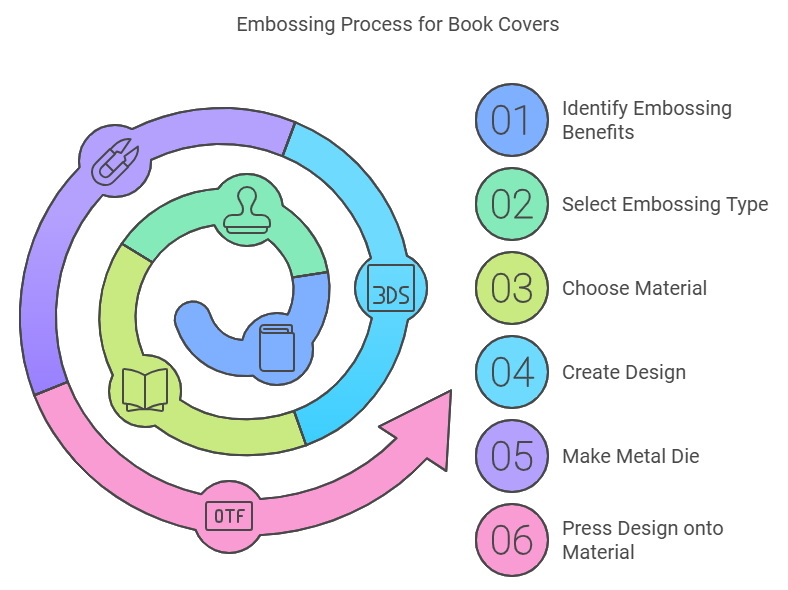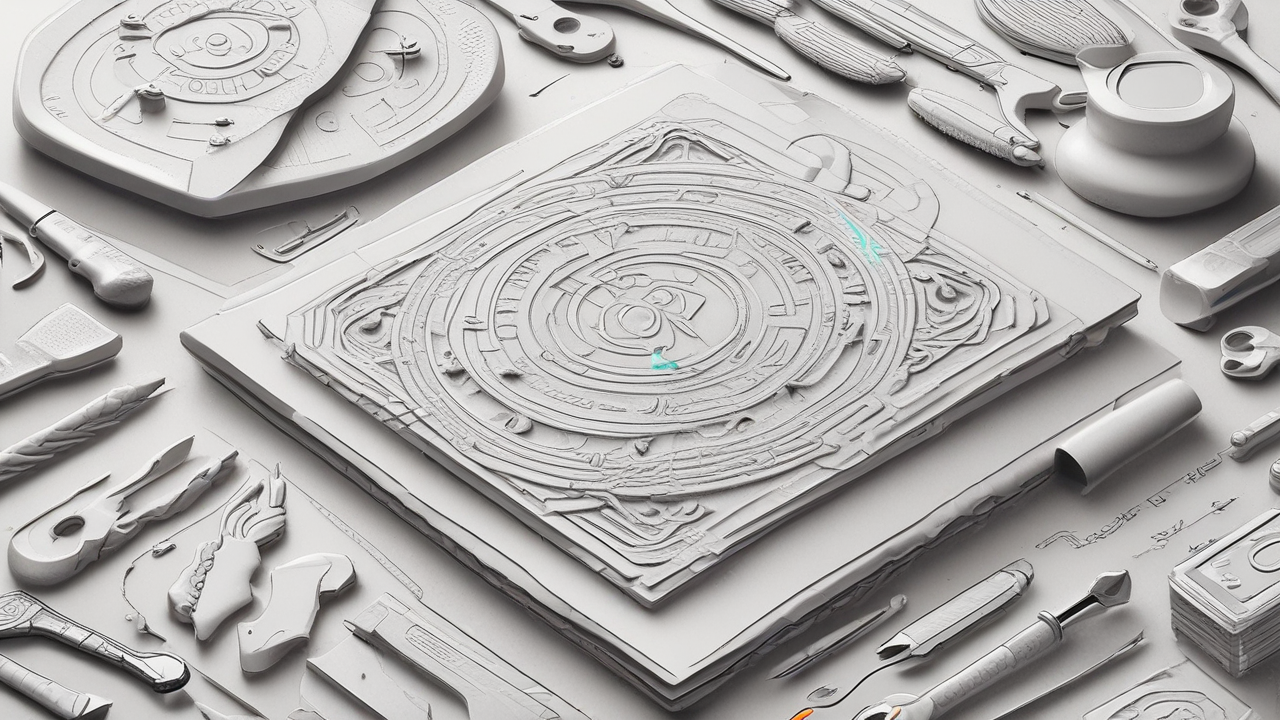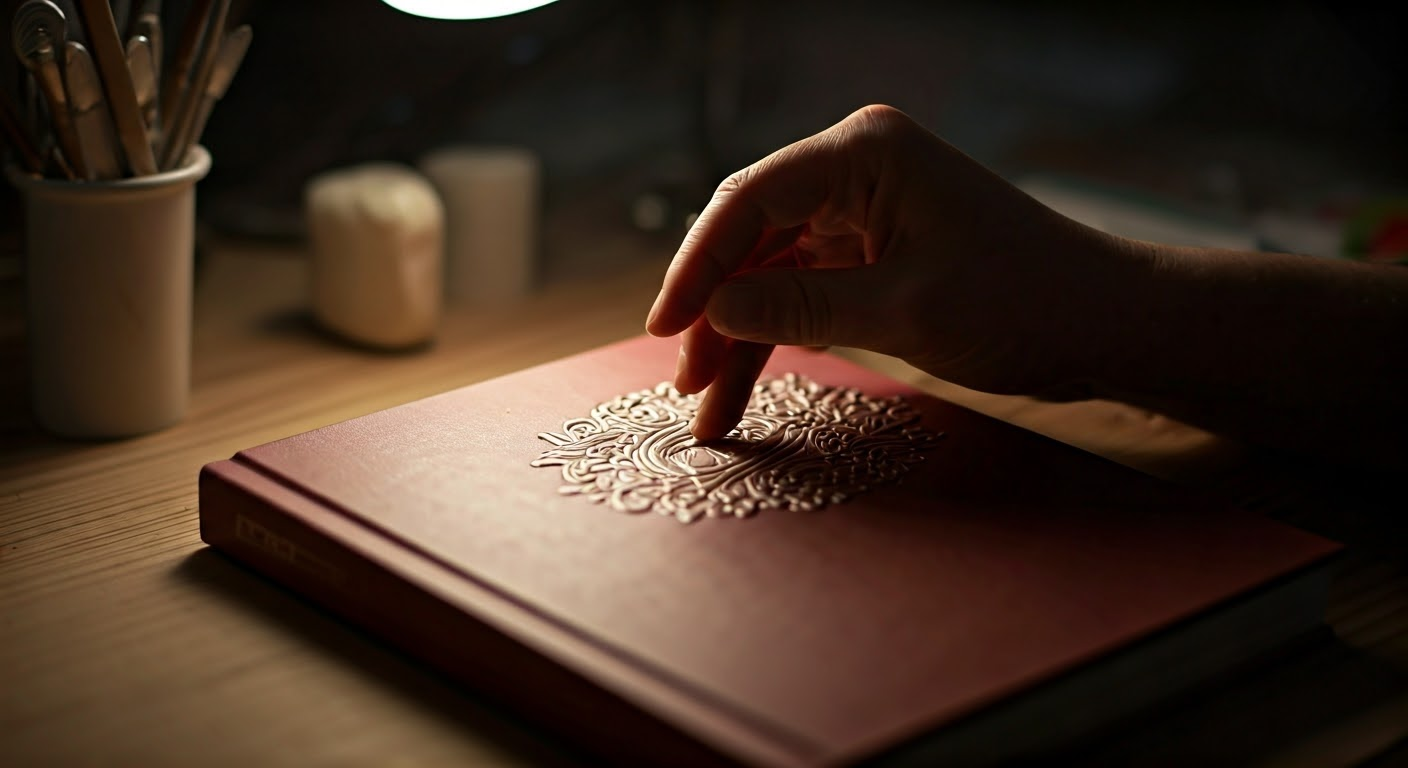Key Highlights
- Embossing is a fantastic way to add a three-dimensional effect to your book cover.
- Two primary types of embossing include: blind embossing (without foil) and embossing with foil stamping.
- Choosing the right material is crucial, considering whether your book is hardcover or softcover.
- The embossing process involves creating a design, making a metal die, and pressing it onto your chosen material.
- Proper preparation and understanding of the process ensure effective and visually appealing results for your book cover.

Introduction
In the world of book cover design, there are numerous ways to make a striking first impression. One such technique that adds a touch of elegance and sophistication is embossing. This blog is your beginner’s guide to understanding book cover embossing, its history, the process, and the various materials and tools involved. Whether you’re a self-publishing author or working with a publishing house, understanding this unique printing technique can elevate your book’s aesthetic appeal significantly.
Understanding Book Cover Embossing

Imagine running your fingers over a book cover, and instead of a flat surface, you feel a raised design – that’s embossing! It’s a technique that adds a three-dimensional element to your book cover design, creating a tactile and visually appealing effect. It involves using a metal die made from your design, which is then pressed onto the chosen material to create a raised or recessed image.
This technique goes beyond mere aesthetics; it adds a luxurious feel to the book, making it stand out from the crowd. Embossing can be used on various elements of the book cover, including the title, author’s name, and graphic elements, adding a unique charm and enhancing the overall design.
The Basics of Book Cover Embossing
Book cover embossing involves creating raised designs on a book cover, adding a tactile and visually appealing element. This process can include using metallic foils or blind embossing for a subtle effect. Embossing is commonly seen on hardcover books and can feature elements like the author’s name or book quote. Techniques like hot stamping can create a striking appearance. Selecting the right materials and tools for embossing is crucial to achieving the desired results and enhancing the overall aesthetics of the book cover.
The History and Evolution of Embossing in Book Design
Embossing in book design has a rich history dating back centuries, adding a touch of elegance and sophistication. Initially used in religious texts, embossing evolved to include decorative elements in book covers. The technique gained popularity during the Renaissance period, becoming synonymous with luxury and quality in book binding. Over time, advancements in technology allowed for more intricate and precise embossing designs, enhancing the overall aesthetic appeal of books. Today, embossing continues to be a popular choice for adding visual interest and tactile engagement to book covers.
Preparing for Embossing
Before you embark on the embossing journey for your book cover, careful planning is essential. The success of this printing process hinges on several factors, including the complexity of your chosen design, the selection of suitable materials, and understanding the technique’s limitations. For instance, intricate designs might require more specialized dies and expertise, impacting the overall cost.
Additionally, the choice of material can significantly influence the final outcome. It’s crucial to have a clear vision of your desired effect and communicate it effectively with your printer. They can guide you on the technical aspects, ensuring your book cover design translates beautifully into a tangible and captivating final product.
Selecting the Right Materials for Embossing
When choosing materials for embossing, consider the type of paper and foil stamping options. Opt for high-quality paper that can withstand the embossing process without tearing. Metallic foils are commonly used for a striking appearance. Ensure the foils complement your book cover design and desired effect, whether it’s a matte or gloss finish. Selecting the right materials is crucial in achieving a visually appealing book cover embossing.
Tools and Equipment Needed for Embossing
To achieve quality book cover embossing, essential tools include a metal plate, foil stamping machine, and a durable paper cutter. Alongside these, having metallic foils in various finishes like matte or gloss is crucial for enhancing the embossed design. Additionally, UV light exposure equipment aids in curing the foils effectively. To simplify the process, investing in a reliable printer for creating the embossing template is recommended. Ensuring the right tools and equipment are at your disposal will significantly elevate the quality of your embossed book covers.
The Embossing Process Step by Step

The embossing process begins with creating your desired design digitally. This design is then used to create the embossing die, a metal block engraved with your artwork. The die acts as a stamp, pressing the design onto your book cover material. If you’re opting for foil stamping, a thin sheet of foil (gold, silver, or other finishes) is placed between the die and the material.
The die is then pressed onto the material using a printing press, which applies heat and pressure. The pressure creates the raised embossing effect, while the heat bonds the foil to the material if you’re using it. The result? A visually captivating and textured book cover that instantly stands out on the shelf.
Creating Your Design for Embossing
When designing for embossing, consider aspects like the book cover design and the placement of elements. Incorporate your book quote or author’s name thoughtfully, ensuring they align with the overall aesthetic. Experiment with different metallic foils for a striking appearance. Embrace the raised effect and sunken effect to add depth to your design. Blend matte and gloss finishes for contrast. Remember, a well-crafted design can elevate your book cover and leave a lasting impression on readers.
Techniques for Effective Embossing
To achieve effective book cover embossing, ensure precise alignment of the metal plate with the book cover design for a striking appearance. Experiment with different metallic foils and consider using debossing for a sunken effect. Use a mix of matte and gloss finishes to enhance the raised effect. Utilize UV printing for a durable finish. Trust a reputable printer for flawless execution and timely shipping. Collaborate closely with the printer to bring your vision to life efficiently.
Conclusion
Embossing adds a touch of elegance to book covers, making them visually appealing and enticing. Understanding the basics, history, and preparation is crucial for a successful embossing process. By selecting the right materials, tools, and techniques, you can create stunning designs. Whether it’s a classic design or a modern twist, embossing allows for creativity and uniqueness in book cover aesthetics. Embrace the art of embossing to enhance the look and feel of your books, leaving a lasting impression on readers and book lovers alike. Explore the world of book cover embossing and elevate your publishing game with style and sophistication.
Frequently Asked Questions
What Are the Common Mistakes in Book Cover Embossing?
One common mistake is choosing overly intricate designs that don’t translate well to the embossing process. Another is failing to consider the paper or cover material, as embossing shows up differently on various surfaces. Additionally, not getting a sample or proof before a full print run can result in costly errors.


0 Comments